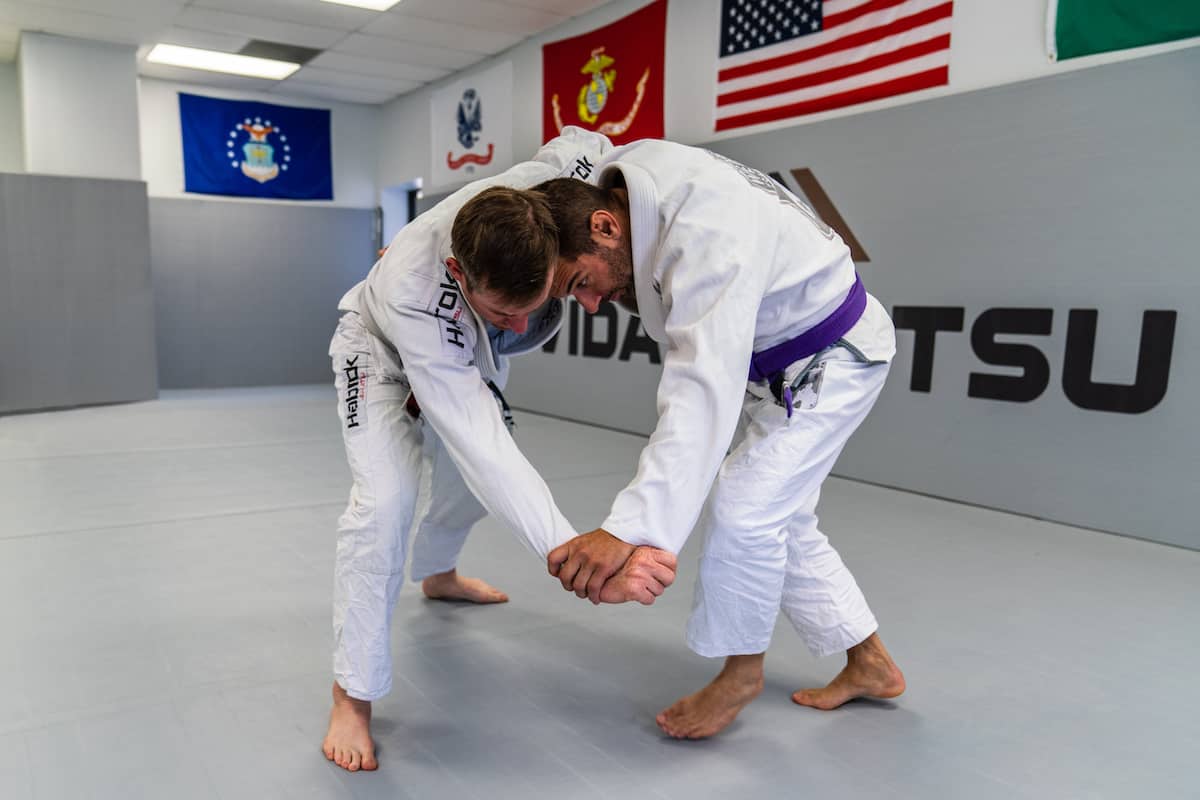Successfully defending yourself in a hand-to-hand combat situation requires a degree of determination, endurance, and agility. Physical fitness is a big part of developing discipline and a mindset where you can cognitively handle the stress and trauma that occur in a physical altercation. If you get too preoccupied with YouTube videos of some dude knocking out some other dude, you may fall under a pretense that a single well-placed punch can quickly resolve a fight. The reality is that a physical altercation between another opponent has no guarantees or “honor” inherent to it. It can literally span all that is possible — from a simple slap across the face to being permanently injured or even killed.
As such, anyone genuinely interested in defending themselves in a fight must pay particular attention to fitness — also considered a “state of readiness.”
Focuses for Physical Conditioning
Martial Arts Training
An essential element to being effective in self-defense is adopting a martial art that works with your body and your goals. Not everyone needs to be an MMA fighter — and that’s not even really all that practical for most people. Whether it is training Brazilian Jiu-Jitsu (which I prefer), Krav Maga or some other style, sticking with a program of martial arts will develop a certain degree of muscle memory that is required in any sustained conflict. On top of that, they are generally great all-around workouts as well.
Recommended Pattern: Formal class at least 1-3 times a week, individual practice throughout the week as possible.
Weight Training
Developing superficial muscle tissue, at best, can function as some sort of primitive defensive armor against superficial blows. However, the tendency in American weight lifting tends to stress appearance and gigantic physique over practicality. While a person who is rippling with muscles can be intimidating, intimidation as a final form of preparedness is altogether irrelevant. That said, adopting a weight training program that emphasizes core muscle strength is both good for general coordination and agility.
Recommended Pattern: 2-3 times a week, targeting key muscle groups with emphasis on core muscle groups.
Long Low To Medium Calisthenics
The biggest obstacle in a fight, outside of being maimed or beaten outright, is endurance. In a fight, adrenaline levels skyrocket in the human body. This affects our central nervous system and can even override parts of our cognitive ability to think our way through problems. Developing endurance through calisthenics is a good baseline to situate your body to elevated blood pressure levels — similar to the vasoconstriction that occurs when a lot of adrenaline hits the system all at once. As your blood races through your body, your mind gradually acclimatizes to this sensation. Ergo, you are not fighting your own body when placed into an extremely tense and potentially dangerous situation.
Recommended Pattern: 3-5 times a week, ideally 40 to 60 minutes at an elevated heart rate appropriate for your age and your physician’s recommendations.
Activities like running, jogging, bicycling, swimming, skiing, etc., all present the opportunity for your mind to gain a gradual baseline for reacting to fatigue, stress, and extended periods of elevated blood pressure.
High-Intensity Interval Training (HIIT)
High-Intensity Interval Training has gained popularity by its namesake. But it is a practice that has long been adopted by athletes. By shocking muscles and rapidly increasing and then maintaining an elevated heart rate, you are both preparing your body and your mind to handle the stress that brings. HIIT programs vary significantly by those providing them. But ultimately, there is definitely a lot of merit in adopting some form of HIIT.
Recommended Pattern: 2-3 times a week, 15 minutes
Conclusion
If you already consistently incorporate some type of workout if your weekly schedule, good job. If not, make sure you ease into it. Pick one program to start with and add in others as you are ready. It is easy to burn yourself out trying to do too much at once or even hurt yourself.
My personal recommendation would be to find a Brazilian Jiu-Jitsu gym in your area to try out. Most will offer you some free classes. But not only will you get an awesome workout but you’ll be learning some great self-defense skills as well. I started training BJJ a little over a year ago and it was the best decision I have ever made. It motived me to start eating better, start strength training and make my overall health more of a priority. And you are never too old to start. I was 39 years old at the time. I’ve also seen a few people over 60 sign up and train with us with no experience at all. As my gym owner told me when I was signing up, “It will change your life.”
Disclaimer: This article is not intended to be a substitute for professional medical advice. You should always seek the advice of your physician before starting any fitness programs.













